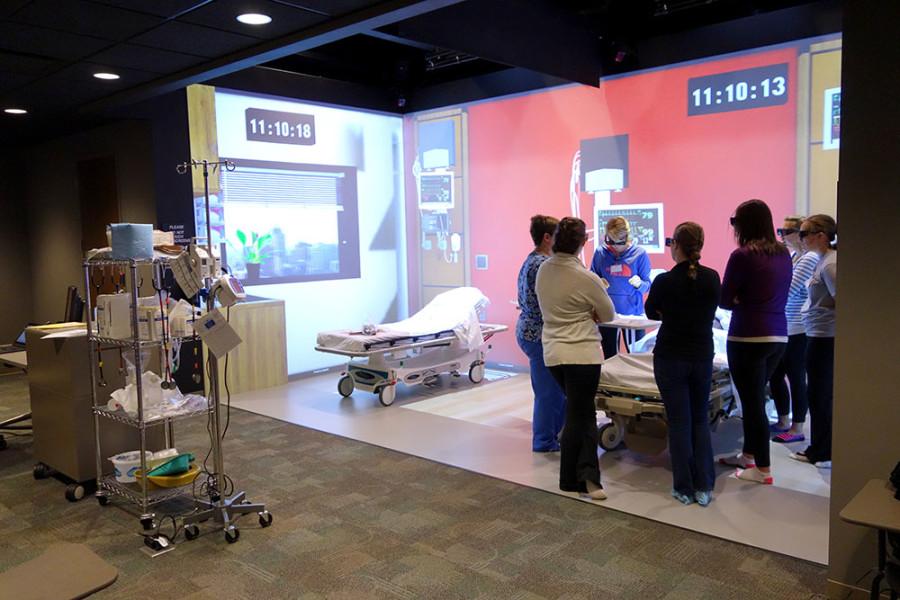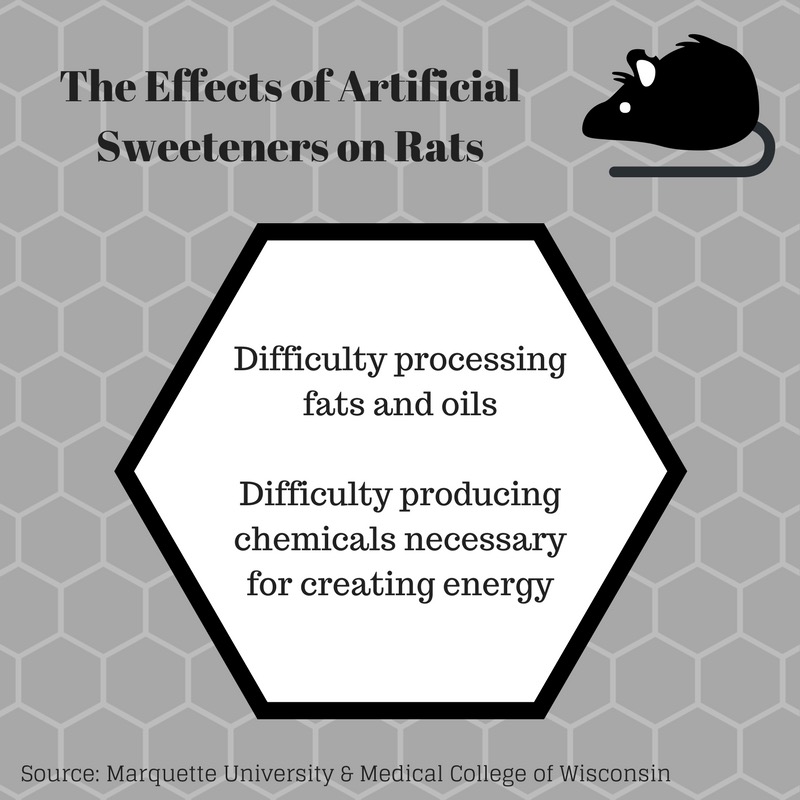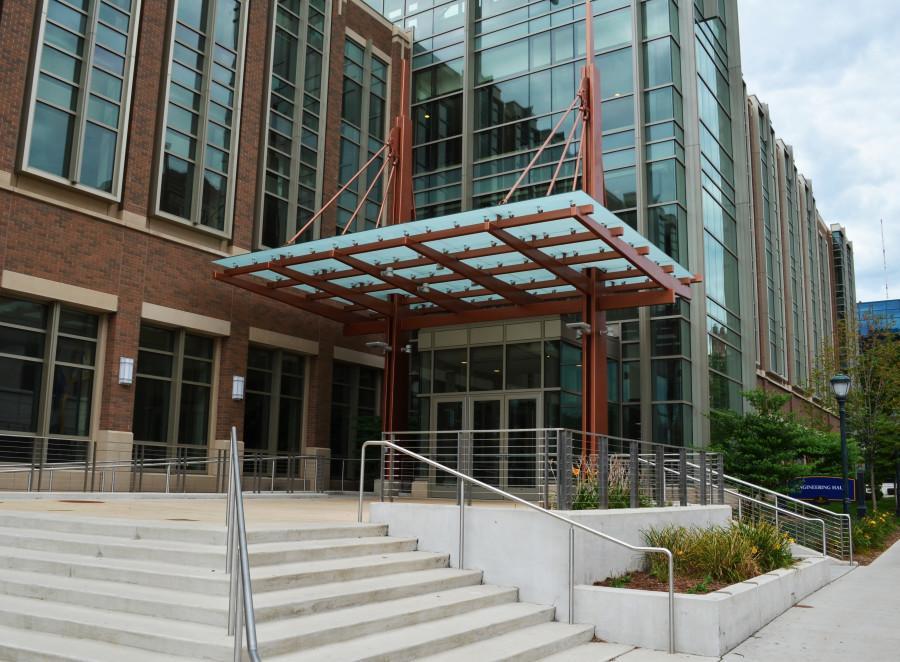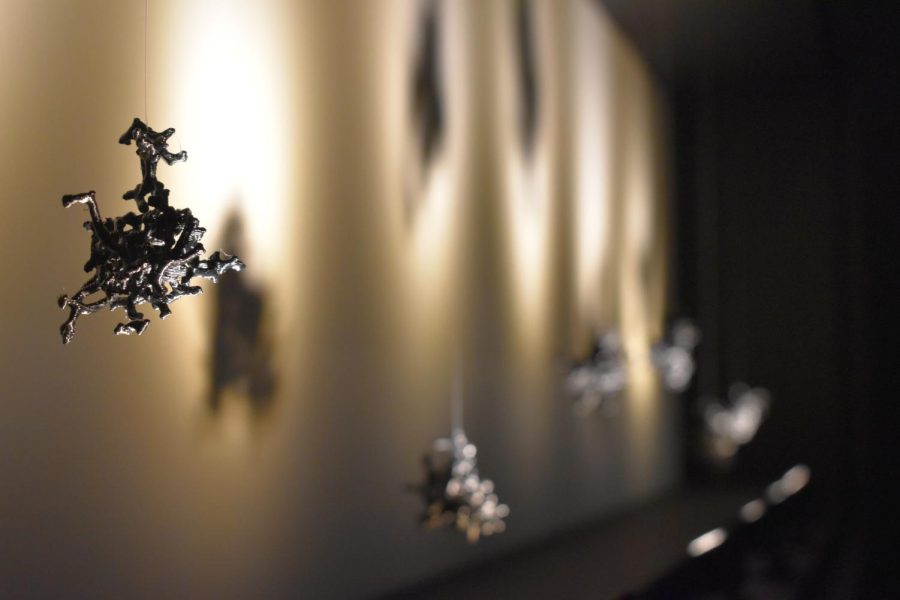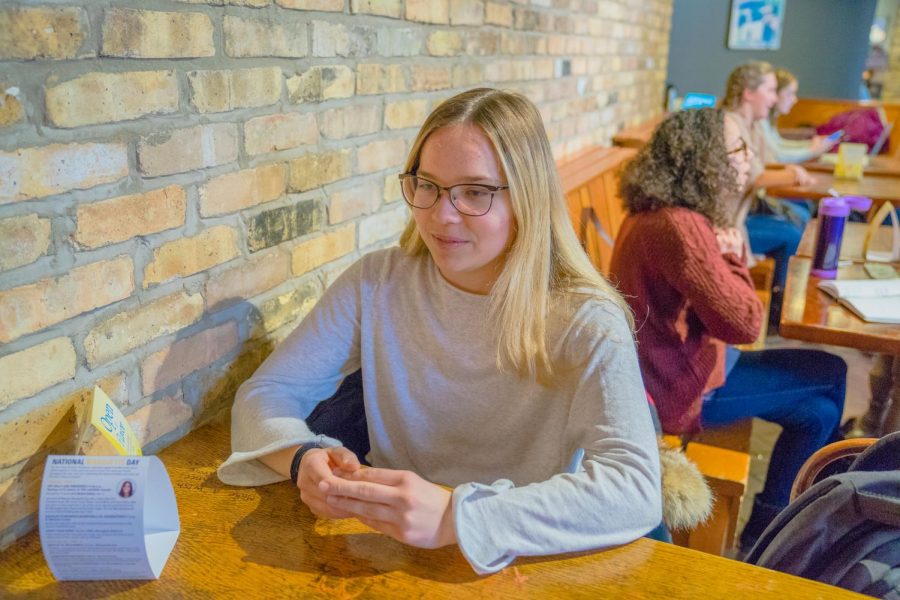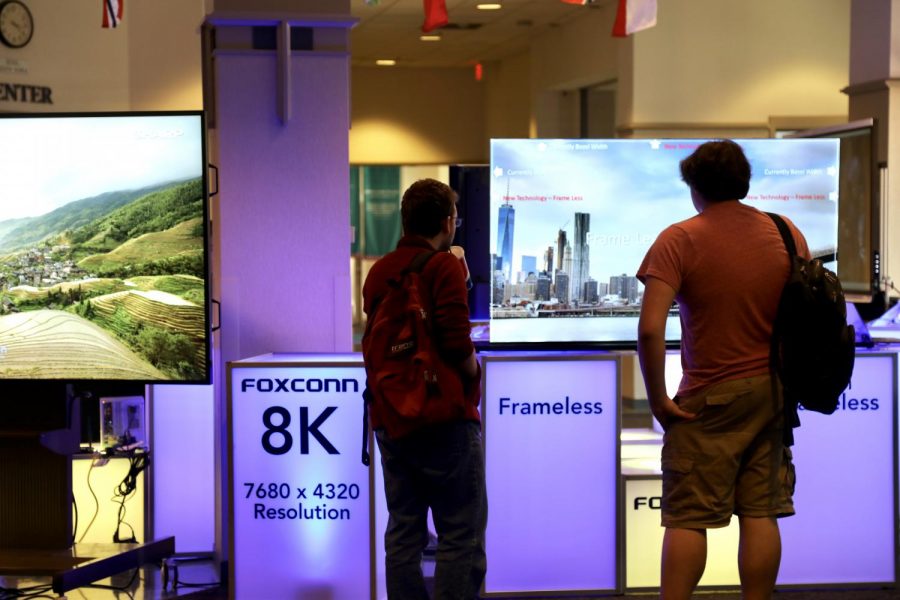Imagine the ability to show biomedical engineering students a blocked artery, to show scientists the center of a protein that is a few nanometers long and to show dental students CT scans of the head spatiality and have the students walk into the center of the jaw.
This is what the Marquette Visualization Lab (MARVL) in the Engineering Hall created to allow students and spectators to see things in a new way.
Engineering students are not the only ones who are benefiting from the lab. Professors from all different majors and areas of study are utilizing the lab to provide their students with a new perspective. Aspiring nurses and even theater groups use it to simulate a hospital room or a scene from a play, while engineers sit in the draft room next door constructing such worlds from reference photos and computer code.
Chris Larkee, the College of Engineering’s visualization technology specialist, noted the technology is simple and different for each group that uses the lab. This allows engineering students who are not as familiar with advanced computer workings to still be able to learn from the lab.
“We have a pretty good, non-technical workflow that simplified things as much as possible,” Larkee said.
This past summer, College of Nursing generalist masters (GEM) students were assessed to determine whether there was a difference in learning in the physical simulation center and MARVL. Both the simulation center and MARVL looked the same and had the same equipment. According to Nursing Clinical Instructor Roschelle Manigold, students learned equally well in either setting, as determined by performance evaluation and a student self-report.
“Comparison of student performance in the two settings is again being assessed this fall in the same course, but this time with sophomore nursing students,” Kerry Kosmoski-Goepfert, dean of undergraduate programs in the nursing school, said.
All across campus, faculty are taking advantage of MARVL for research while also thinking of ways to integrate the lab into teaching students in ways that enhance their understanding of the content they are learning.
“What I really see as the potential on the teaching side…is to bring small groups of interested students…over there and actually immerse students into a protein and teach them about how that proteins structure and function relate back to disease or physiology or human health,” Martin. St. Maurice, an assistant professor of biological sciences, said. “To do it in that environment will capture students’ imaginations in a way that no other medium can.”
Yet, the greatest advantage of the lab thus far is the interaction between such varied disciplines on campus and potentially beyond. MARVL has the capability of so many different applications that it has even brought together professionals from various disciplines who are working towards similar goals.
“The use of the MARVL as a means to teach our students can only be stifled by lack of creativity and imagination,” Kosmoski-Goepfert said. “Because of the flexibility of the MARVL environment, it can be used for many educational purposes.”

